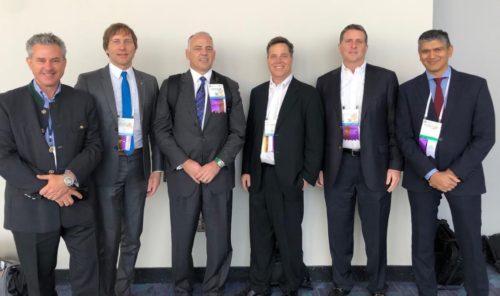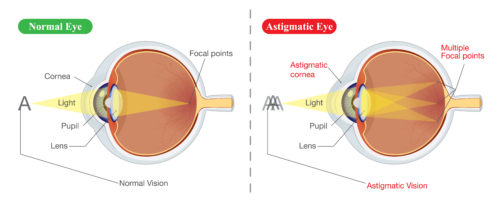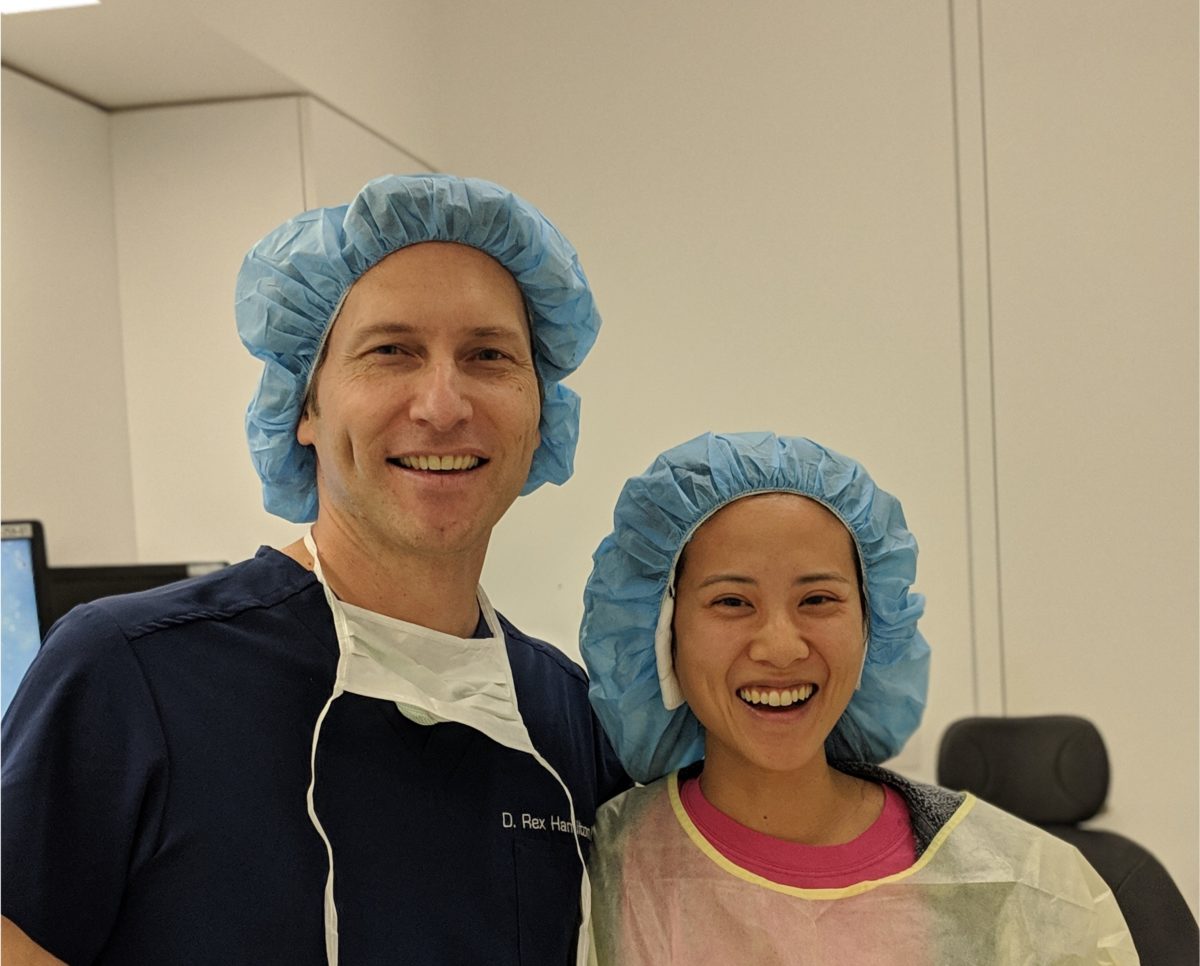When it comes to vision correction, it’s likely that you’ve heard of LASIK. Vision correction procedures have improved and changed immensely over the years!
In 2018, almost anyone can find a procedure that will allow them to live without glasses or contacts, even if they are not a candidate for LASIK.
Now, there’s a new procedure called SMILE on the market which became FDA approved in 2016. Will SMILE give LASIK a run for its money? Keep reading to learn more about SMILE in Los Angeles!
What Is SMILE?
SMILE or small incision lenticule extraction is a premium vision correction procedure. SMILE for astigmatism became FDA approved in October of 2018.
SMILE was first developed in Germany over 10 years ago. To date, SMILE has been performed over 1.5 million times all over the world. Dr. Rex Hamilton was the first surgeon to ever perform SMILE on the West Coast.
 He recently returned from the American Academy of Ophthalmology Annual Meeting in Chicago. At AAO, he was a faculty member and taught a course on SMILE’s intricacies to ophthalmologists from all over the world!
He recently returned from the American Academy of Ophthalmology Annual Meeting in Chicago. At AAO, he was a faculty member and taught a course on SMILE’s intricacies to ophthalmologists from all over the world!

SMILE VS. LASIK
SMILE is a revolutionary vision correction procedure for several reasons. Though SMILE has some similarities to LASIK, they are still two incredibly different procedures. LASIK makes use of 2 lasers. A femtosecond laser creates the LASIK flap and the excimer laser reshapes the cornea.
SMILE uses only a femtosecond laser to create a contact lens shaped piece of material known as a lenticule within the cornea. The lenticule is custom shaped to each individual eye when correcting vision and removed through a tiny incision.
As a result, there is minimal disruption to the surface of the eye and the healing time is very short. Because of the smaller size of the incision, patients experience less dryness after SMILE. The incision is smaller than the flap that’s created when performing LASIK.
Additionally, the small incision allows some extremely nearsighted patients to qualify for SMILE. Because of the severity of their nearsightedness, they may not have qualified for LASIK.
What About Astigmatism?
SMILE is now approved in the United States for treating myopia (nearsightedness) with astigmatism. Astigmatism usually occurs when the cornea of the eye is shaped more like a football, rather than a basketball.
This football shape distorts vision and creates refractive errors. People with astigmatism have blurred vision if it is left uncorrected. This is due to light refracting at many points, instead of one.

Interested in learning more about SMILE for astigmatism from Dr. Hamilton himself? Dr. Hamilton was recently featured on a podcast entitled ‘Big News – SMILE Laser Eye Surgery Approved by FDA to Treat Astigmatism’ to discuss the SMILE procedure and the implications of the FDA approval to perform SMILE on astigmatic patients.
Listen below:
Joined by Paul Rosseau, Senior Director of Refractive Surgery at Zeiss, and Michael Dobkowski, the CEO of Glacial Multimedia, Inc., the three discuss the benefits of the SMILE procedure and the potential impacts of this FDA decision on the future of refractive surgery.
SMILE May Be The Answer For Patients That Can’t Have LASIK
Some patients have corneas that are too thin to make LASIK safe. To be a good candidate for LASIK, corneal thickness is one of the most important factors that’s considered.
Rarely, severely nearsighted patients could have severe complications or vision loss after LASIK because their corneas are too thin to safely handle LASIK.
Before SMILE, these patients would have to resort to PRK. PRK is a procedure requiring removal of the epithelium (“skin cells”) of the cornea. The cornea is then reshaped using an excimer laser.
During PRK, a contact lens is placed in the eye and acts as a bandage while the surface of the cornea heals. As the cornea is recovering, eyes are more sensitive to light, and vision tends to fluctuate significantly.
Patients recovering from PRK may also complain that their eyes feel irritated. This is temporary. Most symptoms, including vision fluctuation, will stabilize after a month.

SMILE is less invasive than LASIK, making it better for treating patients who are severely nearsighted. This eliminates the need to use PRK in these situations.
Avoiding Dry Eye With SMILE
LASIK is well-known in the vision correction community, and it’s an amazing procedure for many patients.
One of the biggest issues with LASIK, however, is the post-operative dry eye that can occur. In general, this lasts for about 6 to 12 months.
Symptoms of dryness can be quite bothersome, particularly in patients who spend lots of time looking at screens. This can include working in front of a computer, smartphones, or even playing video games.
Because of the large incision required for LASIK, many of the nerves that sense dryness are affected and need to regenerate. With SMILE, a much smaller incision is required and only a fraction of the nerves are affected. The result: patients who get SMILE experience fewer dry eye symptoms for a shorter time compared to LASIK.
What does this mean for SMILE patients in Los Angeles where the environment is so dry? Los Angeles SMILE patients can expect a shorter recovery time from the procedure, and less chances of developing dry eye symptoms.
Am I A Good Candidate For SMILE?
Life with glasses and contacts can get old, and fast. But not everyone is going to be a good candidate for SMILE. Like LASIK, you must qualify as a candidate for SMILE.
Currently, SMILE has been FDA approved for myopia with astigmatism. SMILE is capable of correcting nearsightedness up to -10.00 diopters, and -3.00 diopters of astigmatism.
If your nearsightedness and/or astigmatism is outside these ranges, or if you are farsighted, Dr. Hamilton may recommend an alternative procedure for you.
The Hamilton Eye Institute offers 4 refractive correction procedures. These include PRK, LASIK, EVO Visian ICL, and SMILE.
Like LASIK, you should have a stable prescription for at least a year before qualifying for SMILE. During your consultation, you will discuss other factors with Dr. Rex Hamilton while determining which refractive correction procedure is right for you.
What Is Recovery After SMILE Like?
Recovering after any procedure can be nerve-wracking. After SMILE, the recovery process is extremely fast! The whole procedure takes less than 10 minutes to perform on both eyes. Unlike LASIK and PRK, there are no sounds and no odors associated with the procedure.
SMILE patients can resume activities like swimming and contact sports after a week!
Because there is no flap created, SMILE patients don’t have to worry about damage if they get hit in the head or eye.
No matter which procedure you end up getting, it’s important to treat your eyes with TLC! They may feel sore or uncomfortable for a few days.
While recovering from a procedure like SMILE, the best thing you can do is rest your eyes and avoid straining them. This means you should take a break from screens like televisions or tablets, at least for a few days. Your eyes will thank you!
You’ll need to take all medications and eye drops as prescribed by Dr. Rex Hamilton for the best results with SMILE or any of the procedures offered at the Hamilton Eye Institute.
SMILE patients often report 80% better vision only hours after the procedure. Most patients experience 100% visual improvement after a week or two!
Tired of glasses and contacts and ready to see a whole new world? Schedule your SMILE consultation with Dr. Rex Hamilton in Los Angeles, CA today!

